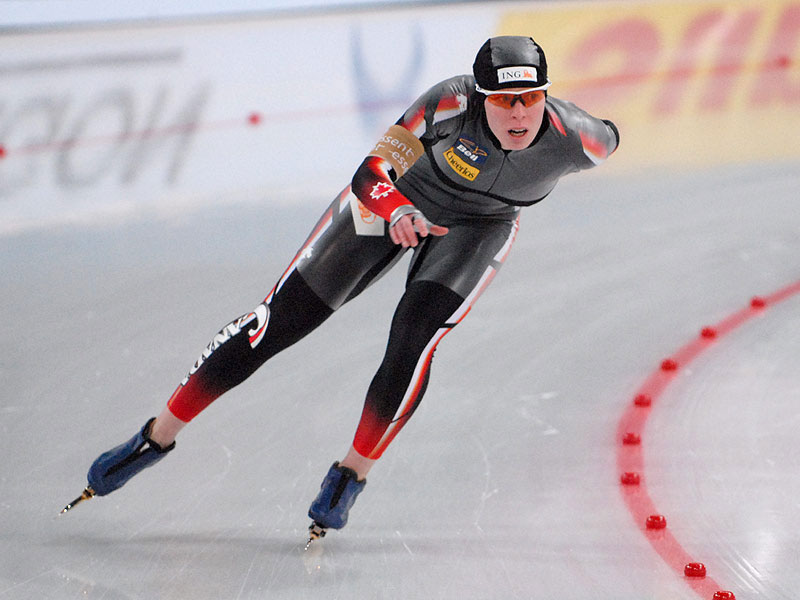
Local Olympic champion announces retirement
By Emilie Medland-Marchen, June 11 2015 —
There’s a tradition in the Olympic Oval. When one of their skaters announces their official retirement, a photograph of them is pinned up in the north corner of the 400-metre ice surface.
Great Canadian athletes have assembled here over the years. The likes of Susan Auch, Jeremy Wotherspoon and Catriona LeMay Doan are clustered together in a grand testament to the history of Olympic success in Canadian speed skating.
Canadian legend Christine Nesbitt’s photo will soon join them.
On June 4, Nesbitt said she was officially stepping away from speed skating. She made the announcement at the Oval, the centre where she spent nearly 12 years training to become an Olympic champion.
The Olympic Oval is the epicentre of long-track speed skating in Canada. Skaters who want to go far in the sport make a pilgrimage to Calgary to skate on the fastest ice in the world. Coaches and administrators assemble here to lead young Canadian athletes to greatness.
Saying goodbye to athletics is never easy, especially in sports like speed skating that harbour dynamic, tight-knit communities.
Nesbitt’s announcement was made to a large crowd of fans, including young speed skaters, old coaches and Oval administrators. Even rival coaches and athletes watched as Nesbitt took her graceful exit from the sport.
With tears in her eyes, she recounted her famous gold medal-winning 1,000-metre race at the 2010 Winter Olympics in Vancouver. Nesbitt always seemed at odds with this race. She spent her entire career training for the perfect race, but won the gold with what she described as an imperfect one.
“I needed to look at it from a different perspective than that perfect, beautiful race that comes together at one point in time,” she said in an interview with CBC’s Scott Russell. “Because it wasn’t that, physically.”
Nesbitt was the fastest woman in the world at the time of the Vancouver Olympics. And she proved it time and time again, setting the world record in the 1,000-metre in 2011, which stood until 2013. It remains the best 1,000-metre mark ever set by a Canadian. Nesbitt also won countless other world titles during her outstanding career.
But it wasn’t her wins, medals or superb statistics that made her such a prolific skater. It wasn’t even that she was an excellent skater — it was the way she skated. She had raw power, grizzled determination and a never-quit attitude that defined her races and her career.
Nesbitt was truly captivating every time she stepped on the ice. Some skaters race with a blank look of concentration that make it look effortless. Nesbitt skated with every ounce of discomfort written across her face. She gritted her teeth and snarled through the pain, but her position never wavered. Her technique never fell apart. She never slowed down. She never gave an inch.
Nesbitt was part of a group of astounding Canadian female speed skaters who dominated the sport — winning countless gold medals, setting world records and putting Canadian speed skating on the map. Coaches still praise their work ethic to younger skaters, emphasizing the intensity and ferocity these legends trained with.
Christine Nesbitt’s story is a lesson in the relentless pursuit of perfection. She was not a perfect skater, but she skated with heart. And it was this drive, rather than perfection, that won her a gold medal.
A blue banner now occupies the north corner of the 400-metre ice surface at the Olympic Oval. Underneath, Nesbitt’s photograph is hidden away, awaiting the official reveal. After a storied career that saw her reach the sport’s highest pinnacle, Nesbitt will join the respected list of the Oval’s past stars, adding another name to the centre’s class of legends.
